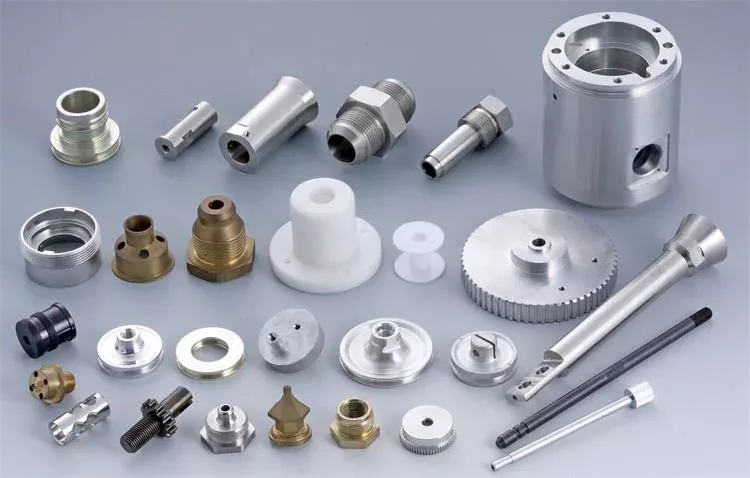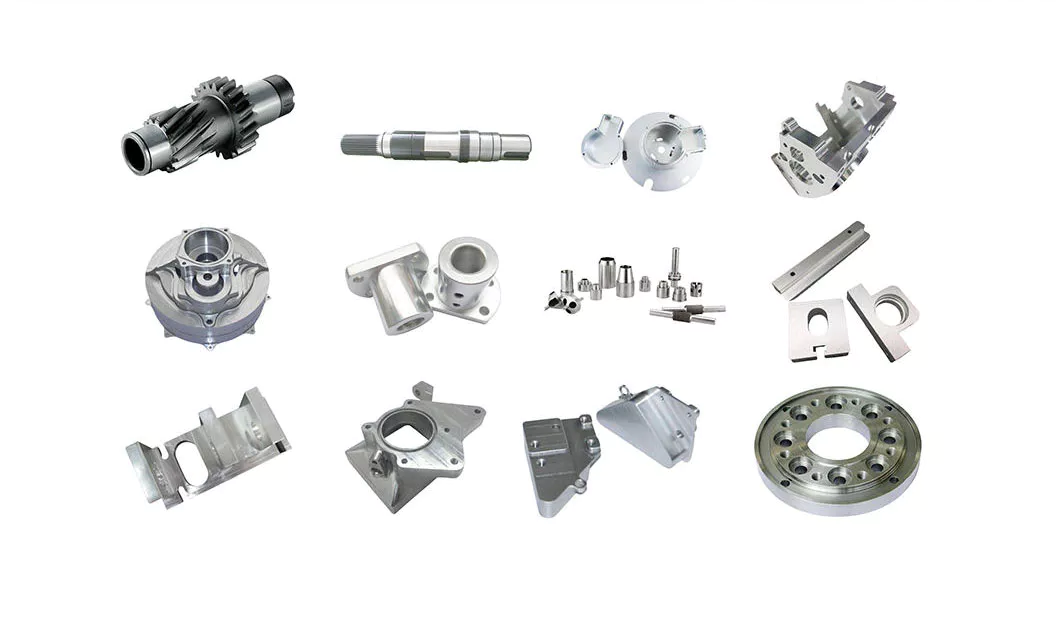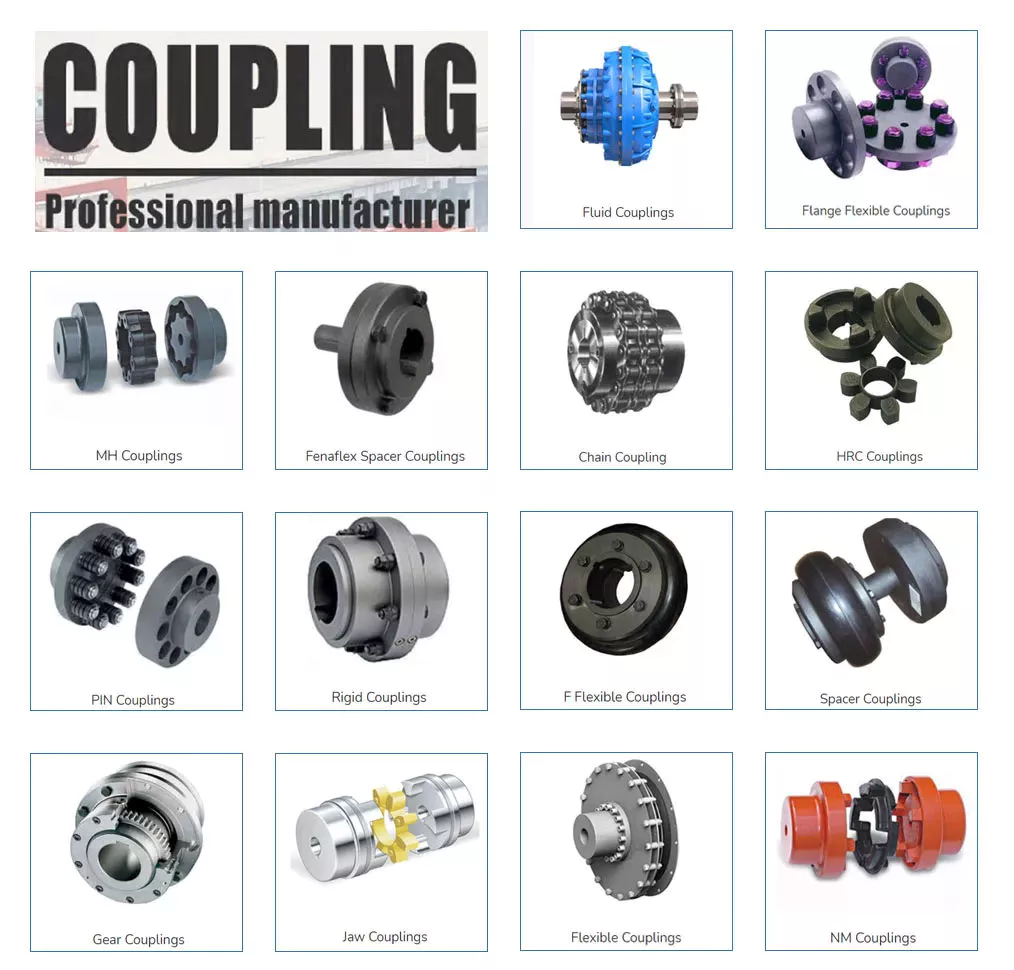Product Description
Products Details
| Product Name | Input shaft |
| Main Process | OEM Precision CNC Machined Brass Hot Forging Valve Fittings Custom Brass Forgings Machining Parts CNC Machining PartHot Forging, Cold Forging, CNC Machining |
| Material | Carbon Steel, Stainless Steel, Aluminum Alloy Or according to customer requirements |
| Forging Weight Range | 10gram – 200kgs |
| Surface Finish | Pickling, Passivation, Sand-blasting, Shot-blasting, Electro-polishing, Buffing, Mirror-polishing, Zinc/Chrome Plating, Anodizing,Powder Coating,Electrophoretic painting etc. |
| Machining Process | CNC Machining/ Lathing/ Milling/ Turning/ Boring/ Drilling/ Tapping/ Broaching/Reaming |
| Machining Tolerance | 0.01mm-0.05mm |
| Heat Treatment | Solution, Annealing, Quenching, Tempering, Aging, etc. |
| Special Treatment | Hardening, Vacuum Impregnation, etc. |
| Special Inspection | Leakage test, Shell Strength test, Radiographic test, Ultrasonic test, Magnetic test, Liquid penetration test, Salt spray test, etc. |
| Application | Petrochemical industry |
| Lead time | 35 days for mold and samples, after confirmation of samples, mass production time is 25 days |
| Small Quantity | Is acceptable |
| Quality Control | Full Inspection |
Specification
| item | value |
| Place of Origin | China |
| Brand Name | |
| Model Number | ANY TYPE |
| Model | Customizable |
| Name | Input shaft for machine |
| Material | Carbon steel |
| Color | According to customer requirements |
| Shape | According to the srawing |
| Characteristic | steel product |
| MOQ | 1000pcs |
| Keyword | Forging |
| Lead Time | 25~45 Days |
| Dimensions | Customers’ Requiry |
OUR BUSINESS SCOPE
Product application
Metal parts can be used for car, truck, elevator, refrigerator, furniture, medical instruments, other mechanical equipment, control cabinet, ventilation equipment, construction industry, wind power industry, solar industry and so on.
Product include
varieties of metal forging parts, metal press forging parts, metal welding parts, metal deep drawing parts, metal punch parts, laser cutting parts;
CNC parts, CNC machining parts, Metal chassis, metal cabinets, metal cases, metal enclosures, metal auto parts,
Metal sleeve, tube, pipe, spacer, metal bracket, bumper bracket, shackle, Radiator Block, door hanger, bar pin,
Material available
Carbon steel, Stainless steel, Spring steel, Aluminum, Aluminum alloy, Galvanized steel and so on.
Surface treatment available
polishing, grinding, brush, zinc plating, powder coating, blackening (black phosphate and light oil dip), E-coating (electrophoresis), anodizing, nickel plating, chrome plating, anti-rust oil, etc.
Metal processing available
Forging parts: tooling making, samples approval, forming, bending, tapping, welding, assembly & finishing.
CNC parts: CNC lathe milling, CNC lathe turning, drilling, tapping, finishing & assembly.
Specification
OEM, according to customer’s drawing or sample
Tolerance
Forging parts:0.01-0.1mm, CNC machining parts:0.1-0.002mm
Service available
Before mass production, we supply pre-production samples for customer final confirmation, tooling maintenance and tooling slight change free
Certificate
ISO9001:2009
ZheJiang Duanhuang industry Co., Ltd. is located in HangZhou, China. HangZhou, the ancient capital, is a world famous historical and cultural city. It is also an important industrial city in China. Many CHINAMFG national scientific research institutions are established here, providing key technical support and services for the development and improvement of the industrial chain. The main business of our company is industrial product design, auto parts design and production, other mechanical parts design and production, titanium alloy material and its products research and development production, CHINAMFG products research and development production, the company has a complete mechanical parts design and production process supporting process, is a professional machinery parts supplier.
The company has complete hardware supporting facilities, and the hot-die forging press models are 300T, 400T, 630T, 1000T, 1600T, 2500T, 4000T, 8000T and other different tonnage forging presses, which are suitable for the production of products from 0.1 kg to 200 kg. The cold forging machine has 4 hydraulic presses, which can produce cold forging products from 0.01 kg to 20 kg. The products can be made of carbon steel, alloy steel, copper forgings, aluminum forgings, stainless steel, titanium alloy and so on. The company′s products are mainly used in automobile industry, construction machinery industry, railway locomotives, power fittings, mining machinery and other industries. The company′s main customers are China CHINAMFG group, China ZheJiang automobile group, China locomotive group, China yituo,and so on.
The quality control equipment of the company includes flaw detector, hardness tester, spectrometer, metallographic analysis, tensile test, coordinate measuring instrument, etc. The company is engaged in the industrial product design and production for 20 years, has accumulated the rich industry experience. The company undertakes customized OEM services for processing of incoming drawings and samples, and can complete all processes including 3D modeling design, mold design and production, product forging and pressing, heat treatment of forgings, and machining. Our company has an independent industrial design service center and a professional industrial design service team, which provides strong technical support for technological innovation of enterprises. The company has special metal products design and development, manufacturing and production services. Titanium alloy products and industrial CHINAMFG products developed and produced by the company are widely used in machinery manufacturing industry and other related fields.
/* January 22, 2571 19:08:37 */!function(){function s(e,r){var a,o={};try{e&&e.split(“,”).forEach(function(e,t){e&&(a=e.match(/(.*?):(.*)$/))&&1
| Material: | Carbon Steel |
|---|---|
| Load: | Drive Shaft |
| Stiffness & Flexibility: | Stiffness / Rigid Axle |
| Journal Diameter Dimensional Accuracy: | IT6-IT9 |
| Axis Shape: | Straight Shaft |
| Shaft Shape: | Stepped Shaft |
| Samples: |
US$ 20/Piece
1 Piece(Min.Order) | |
|---|
| Customization: |
Available
| Customized Request |
|---|
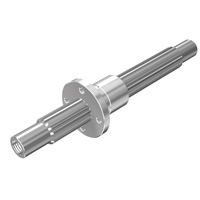
What safety considerations should be kept in mind when working with spline shafts?
Working with spline shafts requires adherence to certain safety considerations to ensure the well-being of personnel and the proper functioning of the machinery or equipment. Here’s a detailed explanation:
1. Personal Protective Equipment (PPE):
When working with spline shafts, individuals should wear appropriate personal protective equipment, including safety glasses, gloves, and protective clothing. PPE helps protect against potential hazards such as flying debris, sharp edges, or contact with lubricants.
2. Lockout/Tagout Procedures:
Prior to performing any maintenance or repair work on machinery or equipment involving spline shafts, proper lockout/tagout procedures should be followed. This involves isolating the power source, de-energizing the system, and securing it with lockout devices or tags to prevent accidental startup or release of stored energy.
3. Training and Competence:
Only trained and competent personnel should work with spline shafts. They should have a thorough understanding of the machinery or equipment, including the operation, maintenance, and safety procedures specific to spline shafts. Adequate training and knowledge help minimize the risk of accidents or improper handling.
4. Proper Handling and Lifting Techniques:
When moving or lifting machinery components that include spline shafts, proper techniques should be employed. This includes using appropriate lifting equipment, maintaining a stable posture, and avoiding sudden movements that could cause strain or injury.
5. Inspection and Maintenance:
Spline shafts should be regularly inspected for signs of wear, damage, or misalignment. Any abnormalities should be addressed promptly by qualified personnel. Routine maintenance, such as lubrication and cleaning, should be performed according to the manufacturer’s recommendations to ensure optimal performance and longevity.
6. Correct Installation and Alignment:
During installation or replacement of spline shafts, proper alignment and fit should be ensured. The shafts should be correctly seated and engaged with the mating components, following the manufacturer’s guidelines. Improper installation or misalignment can lead to premature wear, excessive stress, or failure of the spline shafts.
7. Hazardous Environments:
When spline shafts are used in hazardous environments, such as those with flammable substances, extreme temperatures, or high vibrations, additional safety measures may be required. These may include explosion-proof enclosures, temperature monitoring, or vibration damping systems.
8. Emergency Procedures:
Emergency procedures should be established and communicated to all personnel working with spline shafts. This includes knowing the location of emergency stops, emergency shutdown procedures, and the contact information for emergency response personnel.
9. Manufacturer’s Guidelines:
It is essential to follow the manufacturer’s guidelines and recommendations regarding the installation, operation, and maintenance of spline shafts. The manufacturer’s instructions provide specific safety information and precautions tailored to their product.
By taking these safety considerations into account and implementing appropriate measures, the risks associated with working with spline shafts can be minimized. Safety should always be a top priority when dealing with machinery or equipment that incorporates spline shafts.

How do spline shafts handle variations in load capacity and weight?
Spline shafts are designed to handle variations in load capacity and weight in mechanical systems. Here’s how they accomplish this:
1. Material Selection:
Spline shafts are typically made from high-strength materials such as steel or alloy, chosen for their ability to withstand heavy loads and provide durability. The selection of materials takes into account factors such as tensile strength, yield strength, and fatigue resistance to ensure the shaft can handle variations in load capacity and weight.
2. Engineering Design:
Spline shafts are designed with consideration for the anticipated loads and weights they will encounter. The dimensions, profile, and number of splines are determined based on the expected torque requirements and the magnitude of the applied loads. By carefully engineering the design, spline shafts can handle variations in load capacity and weight while maintaining structural integrity and reliable performance.
3. Load Distribution:
The interlocking engagement of spline shafts allows for effective load distribution along the length of the shaft. This helps distribute the applied loads evenly, preventing localized stress concentrations and minimizing the risk of deformation or failure. By distributing the load, spline shafts can handle variations in load capacity and weight without compromising their performance.
4. Structural Reinforcement:
In applications with higher load capacities or heavier weights, spline shafts may incorporate additional structural features to enhance their strength. This can include thicker spline teeth, larger spline diameters, or reinforced sections along the shaft. By reinforcing critical areas, spline shafts can handle increased loads and weights while maintaining their integrity.
5. Lubrication and Surface Treatment:
Proper lubrication is essential for spline shafts to handle variations in load capacity and weight. Lubricants reduce friction between the mating surfaces, minimizing wear and preventing premature failure. Additionally, surface treatments such as coatings or heat treatments can enhance the hardness and wear resistance of the spline shaft, improving its ability to handle varying loads and weights.
6. Testing and Validation:
Spline shafts undergo rigorous testing and validation to ensure they meet the specified load capacity and weight requirements. This may involve laboratory testing, simulation analysis, or field testing under real-world conditions. By subjecting spline shafts to thorough testing, manufacturers can verify their performance and ensure they can handle variations in load capacity and weight.
Overall, spline shafts are designed and engineered to handle variations in load capacity and weight by utilizing appropriate materials, optimizing the design, distributing loads effectively, incorporating structural reinforcement when necessary, implementing proper lubrication and surface treatments, and conducting thorough testing and validation. These measures enable spline shafts to reliably transmit torque and handle varying loads in diverse mechanical applications.
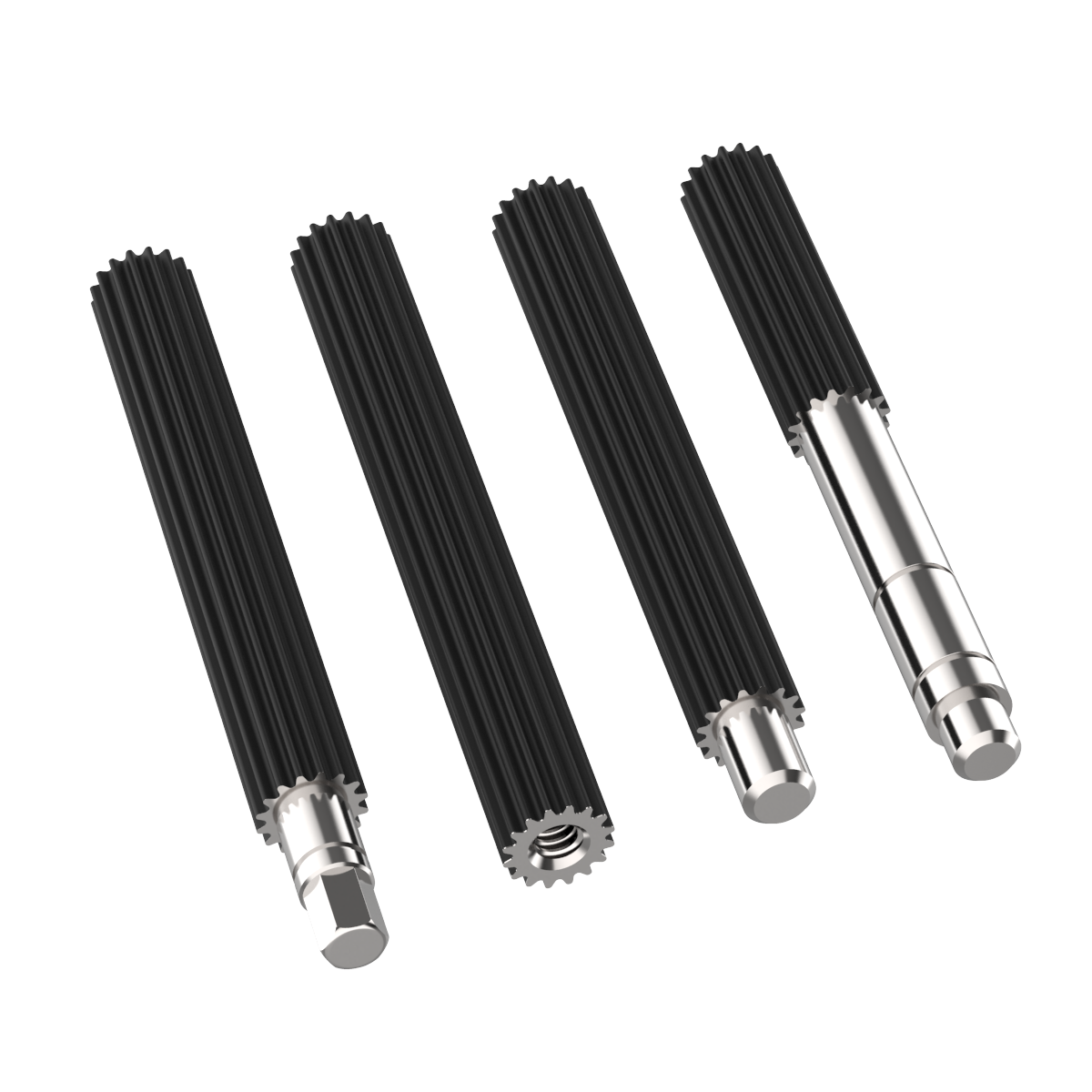
Can you explain the common applications of spline shafts in machinery?
Spline shafts have various common applications in machinery where torque transmission, relative movement, and load distribution are essential. Here’s a detailed explanation:
1. Gearboxes and Transmissions:
Spline shafts are commonly used in gearboxes and transmissions where they facilitate the transmission of torque from the input shaft to the output shaft. The splines on the shaft engage with corresponding splines on the gears, allowing for precise torque transfer and accommodating relative movement between the gears.
2. Power Take-Off (PTO) Units:
In agricultural and industrial machinery, spline shafts are employed in power take-off (PTO) units. PTO units allow the transfer of power from the engine to auxiliary equipment, such as pumps, generators, or farm implements. Spline shafts enable the torque transfer and accommodate the relative movement required for PTO operation.
3. Steering Systems:
Spline shafts play a crucial role in steering systems, especially in vehicles. They are used in steering columns to transmit torque from the steering wheel to the steering rack or gearbox. The splines on the shaft ensure precise torque transfer while allowing for the axial movement required for steering wheel adjustment.
4. Machine Tools:
Spline shafts find applications in machine tools such as milling machines, lathes, and grinding machines. They are used to transmit torque and enable the relative movement required for tool positioning, feed control, and spindle rotation. Spline shafts ensure accurate and controlled movement of the machine tool components.
5. Industrial Pumps and Compressors:
Spline shafts are utilized in various types of pumps and compressors, including centrifugal pumps, gear pumps, and reciprocating compressors. They transmit torque from the driver (such as an electric motor or an engine) to the impeller or rotor, enabling fluid or gas transfer. Spline shafts accommodate the axial or radial movement caused by thermal expansion or misalignment.
6. Printing and Packaging Machinery:
Spline shafts are integral components in printing and packaging machinery. They are used in processes such as web handling, where precise torque transmission and relative movement are required for tasks like tension control, registration, and material feeding. Spline shafts ensure accurate and synchronized movement of the printing and packaging elements.
7. Aerospace and Defense Systems:
In the aerospace and defense industries, spline shafts are utilized in various applications, including aircraft landing gear systems, missile guidance systems, and helicopter rotor systems. They enable torque transmission, accommodate relative movement, and ensure precise control in critical aerospace and defense mechanisms.
8. Construction and Earthmoving Equipment:
Spline shafts are employed in construction and earthmoving equipment, such as excavators, bulldozers, and loaders. They are used in hydraulic systems to transmit torque from the hydraulic motor to the driven components, such as the digger arm or the bucket. Spline shafts enable efficient power transfer and allow for the articulation and movement of the equipment.
These are just a few examples of the common applications of spline shafts in machinery. Their versatility, torque transmission capabilities, and ability to accommodate relative movement make them essential components in various industries where precise power transfer and flexibility are required.


editor by CX 2024-04-10
China top sale transmission gearbox gear shaft input shaft main shaft with Good quality
Issue: New
Guarantee: 1.5 many years
Relevant Industries: Garment Stores, Creating Substance Retailers, Manufacturing Plant, Equipment Mend Outlets, Foodstuff & Beverage Manufacturing facility, Farms, Retail, Printing Outlets, Construction works , Energy & Mining, Meals & Beverage Retailers, Advertising Company, Other, Other
Weight (KG): fifteen
Showroom Spot: None
Movie outgoing-inspection: Provided
Machinery Test Report: Presented
Advertising Variety: New Merchandise 2571
Warranty of main elements: Not Accessible
Core Components: bearing,shaft, bearing,shaft
Composition: Spline
Substance: Steel or as customer’s demand from customers, AISI 4140, 40Cr, Carbon Metal,Aluminium,Brass, Scooter push v-belt bike belt rubber tooth travel belt 835×20 for 125, one hundred fifty, 250 cc motorcycle motor 45# Metal
Coatings: NICKEL
Torque Ability: 2385N.M, 2385N.M
Item title: Spline Shaft
Specification: in accordance to customers’ drawings
Processing Type: normalize,tempering,quenching,anneal,mood
Floor Remedy: Large Sprucing
Certificate: ISO9 Foods & Beverage Retailers, Other, Marketing Business
Standard Length Splined Shafts
Standard Length Splined Shafts are made from Mild Steel and are perfect for most repair jobs, custom machinery building, and many other applications. All stock splined shafts are 2-3/4 inches in length, and full splines are available in any length, with additional materials and working lengths available upon request and quotation. CZPT Manufacturing Company is proud to offer these standard length shafts.
Disc brake mounting interfaces that are splined
There are two common disc brake mounting interfaces, splined and center lock. Disc brakes with splined interfaces are more common. They are usually easier to install. The center lock system requires a tool to remove the locking ring on the disc hub. Six-bolt rotors are easier to install and require only six bolts. The center lock system is commonly used with performance road bikes.
Post mount disc brakes require a post mount adapter, while flat mount disc brakes do not. Post mount adapters are more common and are used for carbon mountain bikes, while flat mount interfaces are becoming the norm on road and gravel bikes. All disc brake adapters are adjustable for rotor size, though. Road bikes usually use 160mm rotors while mountain bikes use rotors that are 180mm or 200mm.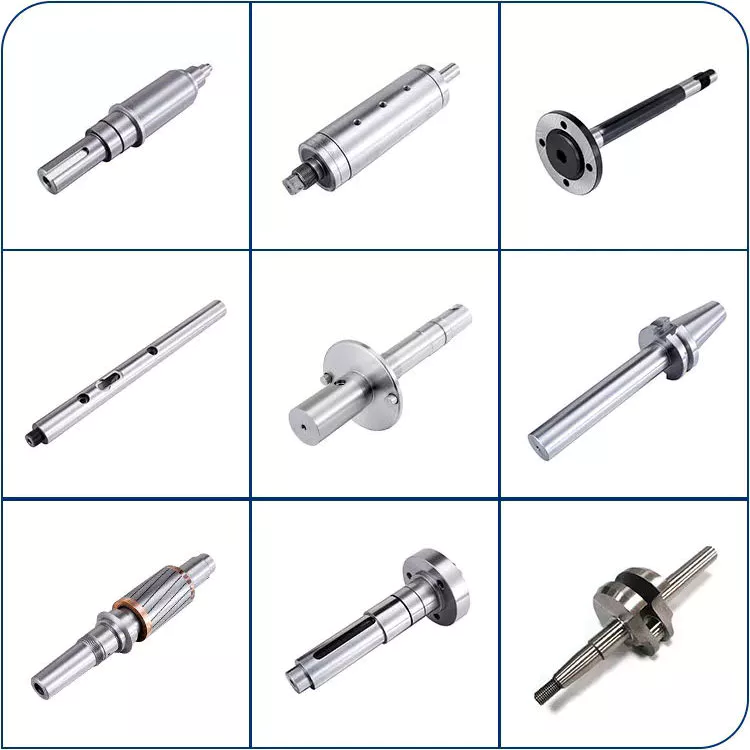
Disc brake mounting interfaces that are helical splined
A helical splined disc brake mounting interface is designed with a splined connection between the hub and brake disc. This splined connection allows for a relatively large amount of radial and rotational displacement between the disc and hub. A loosely splined interface can cause a rattling noise due to the movement of the disc in relation to the hub.
The splines on the brake disc and hub are connected via an air gap. The air gap helps reduce heat conduction from the brake disc to the hub. The present invention addresses problems of noise, heat, and retraction of brake discs at the release of the brake. It also addresses issues with skewing and dragging. If you’re unsure whether this type of mounting interface is right for you, consult your mechanic.
Disc brake mounting interfaces that are helix-splined may be used in conjunction with other components of a wheel. They are particularly useful in disc brake mounting interfaces for hub-to-hub assemblies. The spacer elements, which are preferably located circumferentially, provide substantially the same function no matter how the brake disc rotates. Preferably, three spacer elements are located around the brake disc. Each of these spacer elements has equal clearance between the splines of the brake disc and the hub.
Spacer elements 6 include a helical spring portion 6.1 and extensions in tangential directions that terminate in hooks 6.4. These hooks abut against the brake disc 1 in both directions. The helical spring portion 5.1 and 6.1 have stiffness enough to absorb radial impacts. The spacer elements are arranged around the circumference of the intermeshing zone.
A helical splined disc mount includes a stabilizing element formed as a helical spring. The helical spring extends to the disc’s splines and teeth. The ends of the extension extend in opposite directions, while brackets at each end engage with the disc’s splines and teeth. This stabilizing element is positioned axially over the disc’s width.
Helical splined disc brake mounting interfaces are popular in bicycles and road bicycles. They’re a reliable, durable way to mount your brakes. Splines are widely used in aerospace, and have a higher fatigue life and reliability. The interfaces between the splined disc brake and BB spindle are made from aluminum and acetate.
As the splined hub mounts the disc in a helical fashion, the spring wire and disc 2 will be positioned in close contact. As the spring wire contacts the disc, it creates friction forces that are evenly distributed throughout the disc. This allows for a wide range of axial motion. Disc brake mounting interfaces that are helical splined have higher strength and stiffness than their counterparts.
Disc brake mounting interfaces that are helically splined can have a wide range of splined surfaces. The splined surfaces are the most common type of disc brake mounting interfaces. They are typically made of stainless steel or aluminum and can be used for a variety of applications. However, a splined disc mount will not support a disc with an oversized brake caliper.


editor by czh 2023-02-22
China GTM Gear Rotary Cutter 40 hp Gear Box 1 38 X 6 Spline Input Shaft manufacturer
Product Variety: GS4RC-1
Gearing Arrangement: Bevel / Miter
Output Torque: 138 N.m
Rated Energy: fifty five hp
Input Speed: 540rpm
Output Speed: 1042rpm
Product title: Variable high speed rpm growing variator gearbox
Dimensions: 244*160*376 mm
Ratio: 1:1.93
Weight: 17kg
Lubricate oil volume: 2.3L
Enter Torque N.m: 415 N.m
Housing/scenario Materials: Grey iron/ductile iron/metal
Equipment/crown substance: 8620 metal/ 20CrMnTi/carbon metal
Color: Green/Purple/Blue/Yellow/as for each customer request
Software: Rotary cutter/ rotary mower/ flail mower/ finishing mower
Packaging Details: Sturdy export Wood Situation Crate
Port: HangZhou or ZheJiang
GTM Gear Rotary Cutter forty hp Gear Box 1 3/8″ X 6 Spline Enter Shaft
| Variable high velocity rpm rising variator gearbox |
RG Collection Gearbox, 40hp Rated, one-3/8″ SB input, 1-1/2″ X 12 Spline Output.
1:1.47 Ratio Exchange your broken rotary cutter gearbox with this alternative device.
Why rebuild when you can change at such a reduced price?
These gearboxes is made by GTM China with much more than twenty a long time background.
It can be replaced rotary cutter mower of Worksaver, HawkLine, Worldwide, WAC,
Huge Bee, LMC, King Kutter, Midwest, Servis, Bush Hog, some Howse and several far more.
Be aware: Actual Gearbox may have a rounded housing or sq. as proven, TA Torque arm Shaft mounted reducer aluminium body equipment box lifting jacks hydraulic gearbox 4 way hydraulic speed variator depending on recent availability, all internal areas are interchangeable and specs for both containers are identical!
This gearbox characteristics a 1:1.47 Speed Up equipment ratio for use on 5′ and greater diameter rotary cutters.
Market normal one-3/8″ sleek diameter enter shaft with one/2″ shear bolt gap and retaining ring groove and one.57″ diameter 12 tapered spline output shaft let fitment to most light-weight, standard
and medium duty rotary cutters.
Each gearbox features substantial velocity ball bearing units and warmth taken care of gears and shafts to make certain lengthy existence. Four bolt mounting matches industry standards.
Each gearbox consists of blade provider mounting nut and cotter pin.
Gearboxes are delivered dry and need 16 ounces of 85W-ninety gearlube gear oil or equivalent.
How to select the gearbox?
Wish these points can aid you!
Q: I have a Buhler Farm King 720 brush cutter and am asking yourself
if this gearbox would be ample for this mower?
A:
I employed it on a 6 ft bush hog pulled by a 175 Massey Ferguson tractor and it works fine
I am not 100% positive. This is a common gearbox that matches a lot of various brands of 4,5,6′ devices. You will need to have to just check out the proportions and shaft sizes of mine towards your current box.
If you want a drawing of a single, contact me and enable me know, I can ship you a single. Many thanks!
The rule of thumb is to have a gear box of 10 HP for each and every foot of width of the mower
You require to know how several splines are on your output shaft.
Most bolt designs are the exact same.
The output shaft splines are what actually issues. twelve spline is 40hp gearbox employed on little bush hogs and grass only bush hogs.
fifteen spline is used in 60hp gearbox utilized on 6ft and greater bush hogs.
A 60hp gearbox will stand up to little tree and brush mowing.
Not certain on hp sizes above 60 but I know they make them.
Just take you stump jumper off and count the spline on the shaft this will put you in the ballpark to the gearbox hp score.
Not confident. Just evaluate the bolt pattern.
ZHangZhoug CZPT Agricultural Equipment Science and Engineering LTD proven in 1995. GTM CZPT have 230 million fixed assets, 280 sets of big-scale equipment sets, flooring location over eighty,000 sq. meters, area of construction 56, CZPT 8inch 800W 48V 300kg load IP65 solitary axis gearless brushless DC in wheel hub servo motor with PU tire for cleansing robotic 000 square meters and annual price of creation 500 million. CZPT commits itself to growth,manufacturing, revenue and provider for transmission merchandise. Its merchandise contain spiral and straight bevel gearbox, cylinder gear pace reducer, worm reducer, and transmission scenario and so forth.
There are more than 1000 sorts of equipment bins, much more than 95 per cent of these exports go to Europe, the United States, Australia, Asia and Canada. Our main consumers incorporate the Alamo, GKN group, the pragmatic power team Kuhn, Brandt, Canada, France, Japan, Malaysia group and Rewalt , Air Compressor Pump Head Silent Piston Type Air-compressors 220V 1100W 2hp Oil Free Air Compressor Pump 200lmin @ 3 Bar M3min CZPT , China worldwide industry company and many others properly-known enterprises in the domestic and abroad.
Analytical Approaches to Estimating Contact Pressures in Spline Couplings
A spline coupling is a type of mechanical connection between two rotating shafts. It consists of two parts – a coupler and a coupling. Both parts have teeth which engage and transfer loads. However, spline couplings are typically over-dimensioned, which makes them susceptible to fatigue and static behavior. Wear phenomena can also cause the coupling to fail. For this reason, proper spline coupling design is essential for achieving optimum performance.
Modeling a spline coupling
Spline couplings are becoming increasingly popular in the aerospace industry, but they operate in a slightly misaligned state, causing both vibrations and damage to the contact surfaces. To solve this problem, this article offers analytical approaches for estimating the contact pressures in a spline coupling. Specifically, this article compares analytical approaches with pure numerical approaches to demonstrate the benefits of an analytical approach.
To model a spline coupling, first you create the knowledge base for the spline coupling. The knowledge base includes a large number of possible specification values, which are related to each other. If you modify one specification, it may lead to a warning for violating another. To make the design valid, you must create a spline coupling model that meets the specified specification values.
After you have modeled the geometry, you must enter the contact pressures of the two spline couplings. Then, you need to determine the position of the pitch circle of the spline. In Figure 2, the centre of the male coupling is superposed to that of the female spline. Then, you need to make sure that the alignment meshing distance of the two splines is the same.
Once you have the data you need to create a spline coupling model, you can begin by entering the specifications for the interface design. Once you have this data, you need to choose whether to optimize the internal spline or the external spline. You’ll also need to specify the tooth friction coefficient, which is used to determine the stresses in the spline coupling model 20. You should also enter the pilot clearance, which is the clearance between the tip 186 of a tooth 32 on one spline and the feature on the mating spline.
After you have entered the desired specifications for the external spline, you can enter the parameters for the internal spline. For example, you can enter the outer diameter limit 154 of the major snap 54 and the minor snap 56 of the internal spline. The values of these parameters are displayed in color-coded boxes on the Spline Inputs and Configuration GUI screen 80. Once the parameters are entered, you’ll be presented with a geometric representation of the spline coupling model 20.
Creating a spline coupling model 20
The spline coupling model 20 is created by a product model software program 10. The software validates the spline coupling model against a knowledge base of configuration-dependent specification constraints and relationships. This report is then input to the ANSYS stress analyzer program. It lists the spline coupling model 20’s geometric configurations and specification values for each feature. The spline coupling model 20 is automatically recreated every time the configuration or performance specifications of the spline coupling model 20 are modified.
The spline coupling model 20 can be configured using the product model software program 10. A user specifies the axial length of the spline stack, which may be zero, or a fixed length. The user also enters a radial mating face 148, if any, and selects a pilot clearance specification value of 14.5 degrees or 30 degrees.
A user can then use the mouse 110 to modify the spline coupling model 20. The spline coupling knowledge base contains a large number of possible specification values and the spline coupling design rule. If the user tries to change a spline coupling model, the model will show a warning about a violation of another specification. In some cases, the modification may invalidate the design.
In the spline coupling model 20, the user enters additional performance requirement specifications. The user chooses the locations where maximum torque is transferred for the internal and external splines 38 and 40. The maximum torque transfer location is determined by the attachment configuration of the hardware to the shafts. Once this is selected, the user can click “Next” to save the model. A preview of the spline coupling model 20 is displayed.
The model 20 is a representation of a spline coupling. The spline specifications are entered in the order and arrangement as specified on the spline coupling model 20 GUI screen. Once the spline coupling specifications are entered, the product model software program 10 will incorporate them into the spline coupling model 20. This is the last step in spline coupling model creation.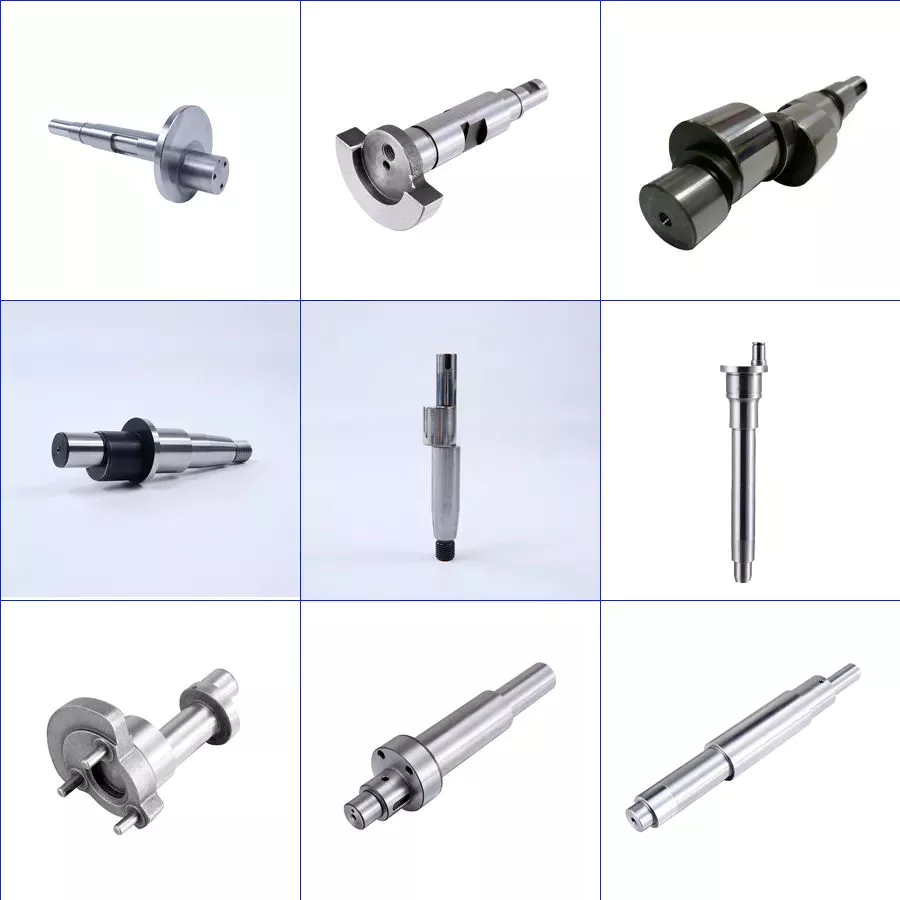
Analysing a spline coupling model 20
An analysis of a spline coupling model consists of inputting its configuration and performance specifications. These specifications may be generated from another computer program. The product model software program 10 then uses its internal knowledge base of configuration dependent specification relationships and constraints to create a valid three-dimensional parametric model 20. This model contains information describing the number and types of spline teeth 32, snaps 34, and shoulder 36.
When you are analysing a spline coupling, the software program 10 will include default values for various specifications. The spline coupling model 20 comprises an internal spline 38 and an external spline 40. Each of the splines includes its own set of parameters, such as its depth, width, length, and radii. The external spline 40 will also contain its own set of parameters, such as its orientation.
Upon selecting these parameters, the software program will perform various analyses on the spline coupling model 20. The software program 10 calculates the nominal and maximal tooth bearing stresses and fatigue life of a spline coupling. It will also determine the difference in torsional windup between an internal and an external spline. The output file from the analysis will be a report file containing model configuration and specification data. The output file may also be used by other computer programs for further analysis.
Once these parameters are set, the user enters the design criteria for the spline coupling model 20. In this step, the user specifies the locations of maximum torque transfer for both the external and internal spline 38. The maximum torque transfer location depends on the configuration of the hardware attached to the shafts. The user may enter up to four different performance requirement specifications for each spline.
The results of the analysis show that there are two phases of spline coupling. The first phase shows a large increase in stress and vibration. The second phase shows a decline in both stress and vibration levels. The third stage shows a constant meshing force between 300N and 320N. This behavior continues for a longer period of time, until the final stage engages with the surface.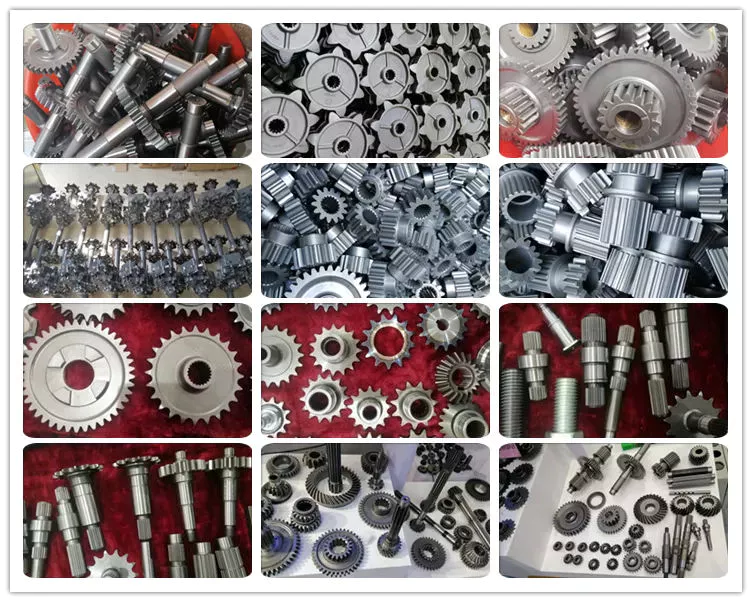
Misalignment of a spline coupling
A study aimed to investigate the position of the resultant contact force in a spline coupling engaging teeth under a steady torque and rotating misalignment. The study used numerical methods based on Finite Element Method (FEM) models. It produced numerical results for nominal conditions and parallel offset misalignment. The study considered two levels of misalignment – 0.02 mm and 0.08 mm – with different loading levels.
The results showed that the misalignment between the splines and rotors causes a change in the meshing force of the spline-rotor coupling system. Its dynamics is governed by the meshing force of splines. The meshing force of a misaligned spline coupling is related to the rotor-spline coupling system parameters, the transmitting torque, and the dynamic vibration displacement.
Despite the lack of precise measurements, the misalignment of splines is a common problem. This problem is compounded by the fact that splines usually feature backlash. This backlash is the result of the misaligned spline. The authors analyzed several splines, varying pitch diameters, and length/diameter ratios.
A spline coupling is a two-dimensional mechanical system, which has positive backlash. The spline coupling is comprised of a hub and shaft, and has tip-to-root clearances that are larger than the backlash. A form-clearance is sufficient to prevent tip-to-root fillet contact. The torque on the splines is transmitted via friction.
When a spline coupling is misaligned, a torque-biased thrust force is generated. In such a situation, the force can exceed the torque, causing the component to lose its alignment. The two-way transmission of torque and thrust is modeled analytically in the present study. The analytical approach provides solutions that can be integrated into the design process. So, the next time you are faced with a misaligned spline coupling problem, make sure to use an analytical approach!
In this study, the spline coupling is analyzed under nominal conditions without a parallel offset misalignment. The stiffness values obtained are the percentage difference between the nominal pitch diameter and load application diameter. Moreover, the maximum percentage difference in the measured pitch diameter is 1.60% under a torque of 5000 N*m. The other parameter, the pitch angle, is taken into consideration in the calculation.


editor by czh 2023-02-18
China Factory Direct Sale Gearbox Transmission Me604056 Input Spline Drive Gear Shaft with Good quality
Condition: New
Warranty: 1 12 months
Relevant Industries: Building Materials Retailers, Producing Plant
Bodyweight (KG): 5.7
Showroom Spot: None
Video clip outgoing-inspection: Presented
Equipment Check Report: Offered
Marketing Variety: Normal Product
Guarantee of main factors: 1 12 months
Main Factors: equipment
Materials: steel
Product Number: 16T-14-00009
Measurement: Shaft diameter inside of one hundred twenty
Packaging Specifics: Inner packing: plastic bag + carton + picket circumstance
Specification
| Place of Origin | China.ZheJiang |
| model | 16T-14-00009 |
| color | Steel shade, customizable |
| shape | Long axis |
| material | steel |
| size | Shaft diameter inside a hundred and twenty |
Stiffness and Torsional Vibration of Spline-Couplings
In this paper, we describe some basic characteristics of spline-coupling and examine its torsional vibration behavior. We also explore the effect of spline misalignment on rotor-spline coupling. These results will assist in the design of improved spline-coupling systems for various applications. The results are presented in Table 1.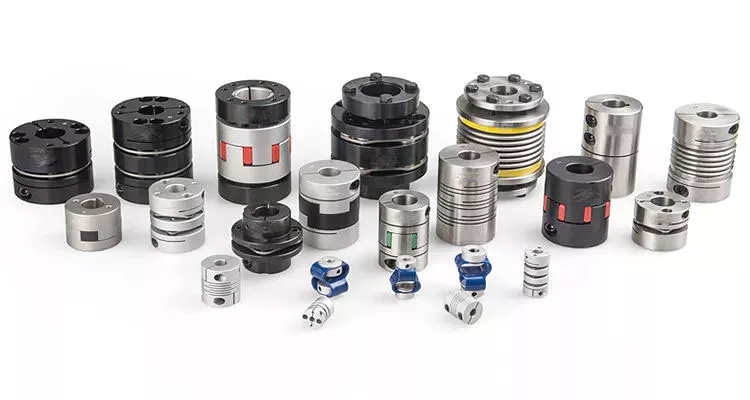
Stiffness of spline-coupling
The stiffness of a spline-coupling is a function of the meshing force between the splines in a rotor-spline coupling system and the static vibration displacement. The meshing force depends on the coupling parameters such as the transmitting torque and the spline thickness. It increases nonlinearly with the spline thickness.
A simplified spline-coupling model can be used to evaluate the load distribution of splines under vibration and transient loads. The axle spline sleeve is displaced a z-direction and a resistance moment T is applied to the outer face of the sleeve. This simple model can satisfy a wide range of engineering requirements but may suffer from complex loading conditions. Its asymmetric clearance may affect its engagement behavior and stress distribution patterns.
The results of the simulations show that the maximum vibration acceleration in both Figures 10 and 22 was 3.03 g/s. This results indicate that a misalignment in the circumferential direction increases the instantaneous impact. Asymmetry in the coupling geometry is also found in the meshing. The right-side spline’s teeth mesh tightly while those on the left side are misaligned.
Considering the spline-coupling geometry, a semi-analytical model is used to compute stiffness. This model is a simplified form of a classical spline-coupling model, with submatrices defining the shape and stiffness of the joint. As the design clearance is a known value, the stiffness of a spline-coupling system can be analyzed using the same formula.
The results of the simulations also show that the spline-coupling system can be modeled using MASTA, a high-level commercial CAE tool for transmission analysis. In this case, the spline segments were modeled as a series of spline segments with variable stiffness, which was calculated based on the initial gap between spline teeth. Then, the spline segments were modelled as a series of splines of increasing stiffness, accounting for different manufacturing variations. The resulting analysis of the spline-coupling geometry is compared to those of the finite-element approach.
Despite the high stiffness of a spline-coupling system, the contact status of the contact surfaces often changes. In addition, spline coupling affects the lateral vibration and deformation of the rotor. However, stiffness nonlinearity is not well studied in splined rotors because of the lack of a fully analytical model.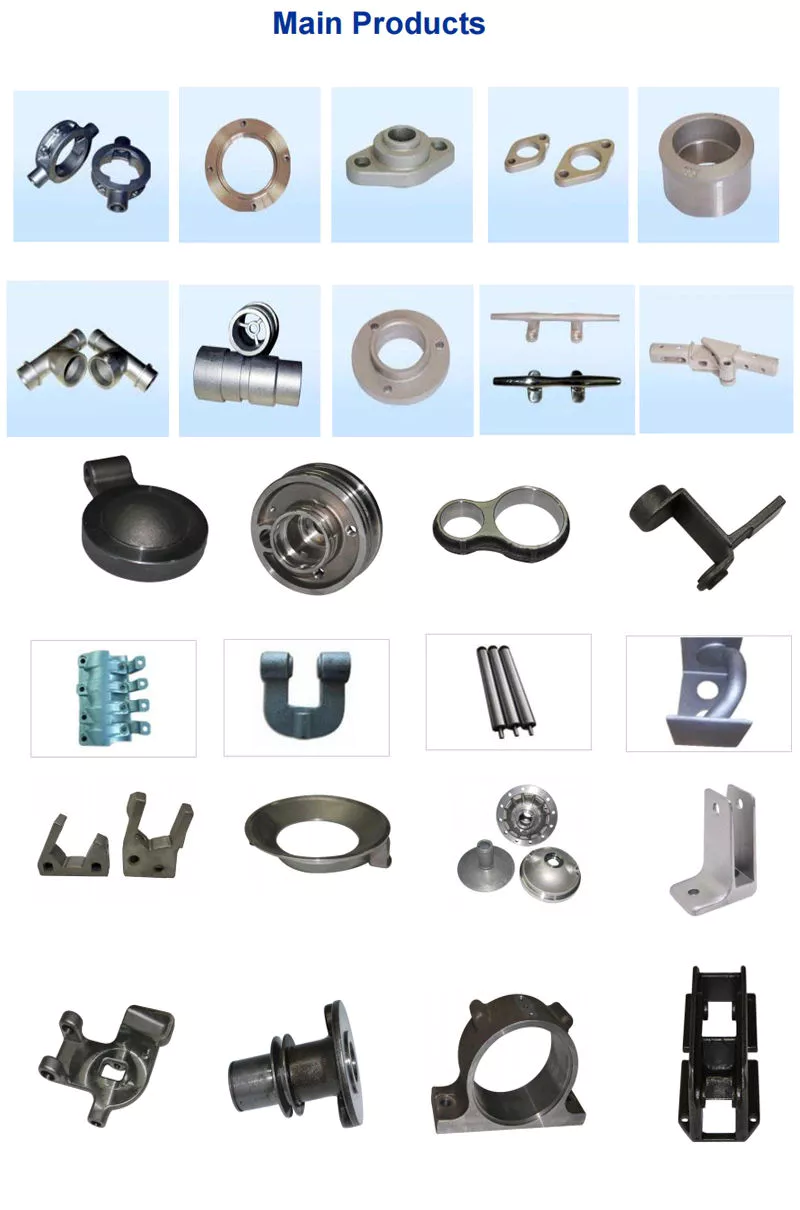
Characteristics of spline-coupling
The study of spline-coupling involves a number of design factors. These include weight, materials, and performance requirements. Weight is particularly important in the aeronautics field. Weight is often an issue for design engineers because materials have varying dimensional stability, weight, and durability. Additionally, space constraints and other configuration restrictions may require the use of spline-couplings in certain applications.
The main parameters to consider for any spline-coupling design are the maximum principal stress, the maldistribution factor, and the maximum tooth-bearing stress. The magnitude of each of these parameters must be smaller than or equal to the external spline diameter, in order to provide stability. The outer diameter of the spline must be at least four inches larger than the inner diameter of the spline.
Once the physical design is validated, the spline coupling knowledge base is created. This model is pre-programmed and stores the design parameter signals, including performance and manufacturing constraints. It then compares the parameter values to the design rule signals, and constructs a geometric representation of the spline coupling. A visual model is created from the input signals, and can be manipulated by changing different parameters and specifications.
The stiffness of a spline joint is another important parameter for determining the spline-coupling stiffness. The stiffness distribution of the spline joint affects the rotor’s lateral vibration and deformation. A finite element method is a useful technique for obtaining lateral stiffness of spline joints. This method involves many mesh refinements and requires a high computational cost.
The diameter of the spline-coupling must be large enough to transmit the torque. A spline with a larger diameter may have greater torque-transmitting capacity because it has a smaller circumference. However, the larger diameter of a spline is thinner than the shaft, and the latter may be more suitable if the torque is spread over a greater number of teeth.
Spline-couplings are classified according to their tooth profile along the axial and radial directions. The radial and axial tooth profiles affect the component’s behavior and wear damage. Splines with a crowned tooth profile are prone to angular misalignment. Typically, these spline-couplings are oversized to ensure durability and safety.
Stiffness of spline-coupling in torsional vibration analysis
This article presents a general framework for the study of torsional vibration caused by the stiffness of spline-couplings in aero-engines. It is based on a previous study on spline-couplings. It is characterized by the following three factors: bending stiffness, total flexibility, and tangential stiffness. The first criterion is the equivalent diameter of external and internal splines. Both the spline-coupling stiffness and the displacement of splines are evaluated by using the derivative of the total flexibility.
The stiffness of a spline joint can vary based on the distribution of load along the spline. Variables affecting the stiffness of spline joints include the torque level, tooth indexing errors, and misalignment. To explore the effects of these variables, an analytical formula is developed. The method is applicable for various kinds of spline joints, such as splines with multiple components.
Despite the difficulty of calculating spline-coupling stiffness, it is possible to model the contact between the teeth of the shaft and the hub using an analytical approach. This approach helps in determining key magnitudes of coupling operation such as contact peak pressures, reaction moments, and angular momentum. This approach allows for accurate results for spline-couplings and is suitable for both torsional vibration and structural vibration analysis.
The stiffness of spline-coupling is commonly assumed to be rigid in dynamic models. However, various dynamic phenomena associated with spline joints must be captured in high-fidelity drivetrain models. To accomplish this, a general analytical stiffness formulation is proposed based on a semi-analytical spline load distribution model. The resulting stiffness matrix contains radial and tilting stiffness values as well as torsional stiffness. The analysis is further simplified with the blockwise inversion method.
It is essential to consider the torsional vibration of a power transmission system before selecting the coupling. An accurate analysis of torsional vibration is crucial for coupling safety. This article also discusses case studies of spline shaft wear and torsionally-induced failures. The discussion will conclude with the development of a robust and efficient method to simulate these problems in real-life scenarios.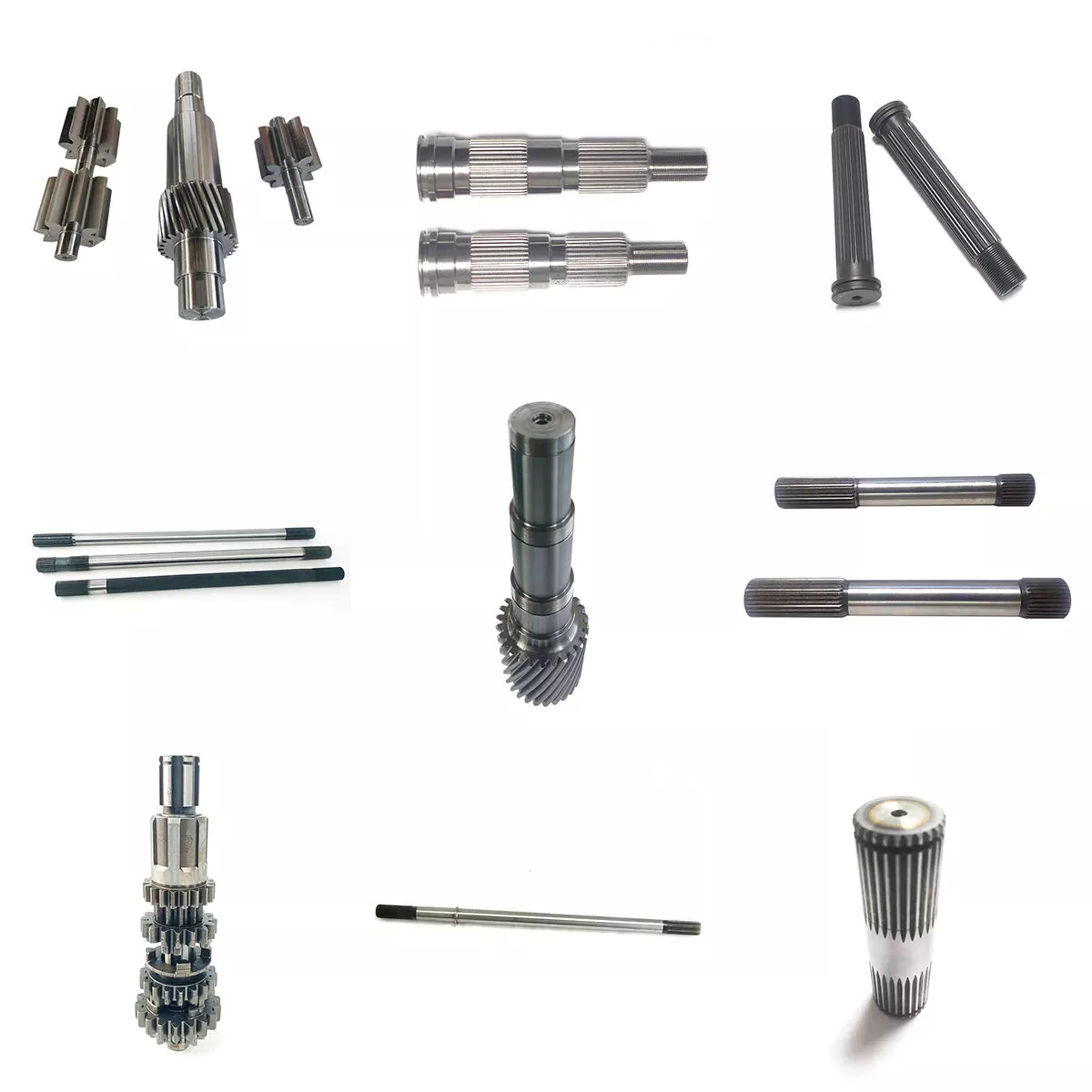
Effect of spline misalignment on rotor-spline coupling
In this study, the effect of spline misalignment in rotor-spline coupling is investigated. The stability boundary and mechanism of rotor instability are analyzed. We find that the meshing force of a misaligned spline coupling increases nonlinearly with spline thickness. The results demonstrate that the misalignment is responsible for the instability of the rotor-spline coupling system.
An intentional spline misalignment is introduced to achieve an interference fit and zero backlash condition. This leads to uneven load distribution among the spline teeth. A further spline misalignment of 50um can result in rotor-spline coupling failure. The maximum tensile root stress shifted to the left under this condition.
Positive spline misalignment increases the gear mesh misalignment. Conversely, negative spline misalignment has no effect. The right-handed spline misalignment is opposite to the helix hand. The high contact area is moved from the center to the left side. In both cases, gear mesh is misaligned due to deflection and tilting of the gear under load.
This variation of the tooth surface is measured as the change in clearance in the transverse plain. The radial and axial clearance values are the same, while the difference between the two is less. In addition to the frictional force, the axial clearance of the splines is the same, which increases the gear mesh misalignment. Hence, the same procedure can be used to determine the frictional force of a rotor-spline coupling.
Gear mesh misalignment influences spline-rotor coupling performance. This misalignment changes the distribution of the gear mesh and alters contact and bending stresses. Therefore, it is essential to understand the effects of misalignment in spline couplings. Using a simplified system of helical gear pair, Hong et al. examined the load distribution along the tooth interface of the spline. This misalignment caused the flank contact pattern to change. The misaligned teeth exhibited deflection under load and developed a tilting moment on the gear.
The effect of spline misalignment in rotor-spline couplings is minimized by using a mechanism that reduces backlash. The mechanism comprises cooperably splined male and female members. One member is formed by two coaxially aligned splined segments with end surfaces shaped to engage in sliding relationship. The connecting device applies axial loads to these segments, causing them to rotate relative to one another.


editor by czh 2023-02-17
China Forging Steel Long Knurled Grooved Tube Drive Shafts Aluminum Transmission Input Output Axle Hollow Spline Shaft with Best Sales
Item Description
1. Description
|
Solution identify |
304 stainless metal shaft |
|
Material |
Stainless Steel,Aluminum,Brass, Bronze,Carbon steel and ect. environmental protection content. |
|
Size |
Customized according to your drawing. |
|
Solutions |
OEM, style, customized |
|
Tolerance |
+/-.01mm to +/-.005mm |
|
Area therapy |
Passivation *Sprucing *Anodizing *Sand blasting *Electroplating(shade, blue, white, black zinc, Ni, Cr, tin, copper, silver) *Black oxide coating *Heat-disposing *Very hot-dip galvanizing *Rust preventive oil |
|
MOQ |
1 piece Copper bushing |
|
Samples |
We can make sample within 7days totally free of demand |
|
Certification |
ISO9001:2015 cnc machining turning parts shaft |
|
Payment Phrases |
Financial institution TransferWestern Union Paypal Payoneer, Alibaba Trade Assurance30% deposit & balance ahead of delivery. |
|
Delivery time |
Inside of fifteen-twenty workdays after deposit or payment obtained |
|
Shipping Port |
HangZhou 304 stainless steel shaft |
2. Primary Motor Shafts
3. Function Flow
4. Software
5. About US
|
US $0.99-6.99 / Piece | |
100 Pieces (Min. Order) |
###
|
Shipping Cost:
Estimated freight per unit. |
To be negotiated| Freight Cost Calculator |
|---|
###
| Material: | Carbon Steel |
|---|---|
| Load: | Central Spindle |
| Stiffness & Flexibility: | Stiffness / Rigid Axle |
###
| Samples: |
US$ 50/Piece
1 Piece(Min.Order) |
|---|
###
| Customization: |
Available
|
|---|
###
|
Product name |
304 stainless steel shaft |
|
Material |
Stainless Steel,Aluminum,Brass, Bronze,Carbon steel and ect. environmental protection material. |
|
Size |
Customized according to your drawing. |
|
Services |
OEM, design, customized |
|
Tolerance |
+/-0.01mm to +/-0.005mm |
|
Surface treatment |
Passivation *Polishing *Anodizing *Sand blasting *Electroplating(color, blue, white, black zinc, Ni, Cr, tin, copper, silver) *Black oxide coating *Heat-disposing *Hot-dip galvanizing *Rust preventive oil |
|
MOQ |
1 piece Copper bushing |
|
Samples |
We can make sample within 7days free of charge |
|
Certificate |
ISO9001:2015 cnc machining turning parts shaft |
|
Payment Terms |
Bank Transfer;Western Union; Paypal ; Payoneer, Alibaba Trade Assurance30% deposit & balance before shipping. |
|
Delivery time |
Within 15-20 workdays after deposit or payment received |
|
Shipping Port |
Shenzhen 304 stainless steel shaft |
|
US $0.99-6.99 / Piece | |
100 Pieces (Min. Order) |
###
|
Shipping Cost:
Estimated freight per unit. |
To be negotiated| Freight Cost Calculator |
|---|
###
| Material: | Carbon Steel |
|---|---|
| Load: | Central Spindle |
| Stiffness & Flexibility: | Stiffness / Rigid Axle |
###
| Samples: |
US$ 50/Piece
1 Piece(Min.Order) |
|---|
###
| Customization: |
Available
|
|---|
###
|
Product name |
304 stainless steel shaft |
|
Material |
Stainless Steel,Aluminum,Brass, Bronze,Carbon steel and ect. environmental protection material. |
|
Size |
Customized according to your drawing. |
|
Services |
OEM, design, customized |
|
Tolerance |
+/-0.01mm to +/-0.005mm |
|
Surface treatment |
Passivation *Polishing *Anodizing *Sand blasting *Electroplating(color, blue, white, black zinc, Ni, Cr, tin, copper, silver) *Black oxide coating *Heat-disposing *Hot-dip galvanizing *Rust preventive oil |
|
MOQ |
1 piece Copper bushing |
|
Samples |
We can make sample within 7days free of charge |
|
Certificate |
ISO9001:2015 cnc machining turning parts shaft |
|
Payment Terms |
Bank Transfer;Western Union; Paypal ; Payoneer, Alibaba Trade Assurance30% deposit & balance before shipping. |
|
Delivery time |
Within 15-20 workdays after deposit or payment received |
|
Shipping Port |
Shenzhen 304 stainless steel shaft |
Standard Length Splined Shafts
Standard Length Splined Shafts are made from Mild Steel and are perfect for most repair jobs, custom machinery building, and many other applications. All stock splined shafts are 2-3/4 inches in length, and full splines are available in any length, with additional materials and working lengths available upon request and quotation. CZPT Manufacturing Company is proud to offer these standard length shafts.
Disc brake mounting interfaces that are splined
There are two common disc brake mounting interfaces, splined and center lock. Disc brakes with splined interfaces are more common. They are usually easier to install. The center lock system requires a tool to remove the locking ring on the disc hub. Six-bolt rotors are easier to install and require only six bolts. The center lock system is commonly used with performance road bikes.
Post mount disc brakes require a post mount adapter, while flat mount disc brakes do not. Post mount adapters are more common and are used for carbon mountain bikes, while flat mount interfaces are becoming the norm on road and gravel bikes. All disc brake adapters are adjustable for rotor size, though. Road bikes usually use 160mm rotors while mountain bikes use rotors that are 180mm or 200mm.
Disc brake mounting interfaces that are helical splined
A helical splined disc brake mounting interface is designed with a splined connection between the hub and brake disc. This splined connection allows for a relatively large amount of radial and rotational displacement between the disc and hub. A loosely splined interface can cause a rattling noise due to the movement of the disc in relation to the hub.
The splines on the brake disc and hub are connected via an air gap. The air gap helps reduce heat conduction from the brake disc to the hub. The present invention addresses problems of noise, heat, and retraction of brake discs at the release of the brake. It also addresses issues with skewing and dragging. If you’re unsure whether this type of mounting interface is right for you, consult your mechanic.
Disc brake mounting interfaces that are helix-splined may be used in conjunction with other components of a wheel. They are particularly useful in disc brake mounting interfaces for hub-to-hub assemblies. The spacer elements, which are preferably located circumferentially, provide substantially the same function no matter how the brake disc rotates. Preferably, three spacer elements are located around the brake disc. Each of these spacer elements has equal clearance between the splines of the brake disc and the hub.
Spacer elements 6 include a helical spring portion 6.1 and extensions in tangential directions that terminate in hooks 6.4. These hooks abut against the brake disc 1 in both directions. The helical spring portion 5.1 and 6.1 have stiffness enough to absorb radial impacts. The spacer elements are arranged around the circumference of the intermeshing zone.
A helical splined disc mount includes a stabilizing element formed as a helical spring. The helical spring extends to the disc’s splines and teeth. The ends of the extension extend in opposite directions, while brackets at each end engage with the disc’s splines and teeth. This stabilizing element is positioned axially over the disc’s width.
Helical splined disc brake mounting interfaces are popular in bicycles and road bicycles. They’re a reliable, durable way to mount your brakes. Splines are widely used in aerospace, and have a higher fatigue life and reliability. The interfaces between the splined disc brake and BB spindle are made from aluminum and acetate.
As the splined hub mounts the disc in a helical fashion, the spring wire and disc 2 will be positioned in close contact. As the spring wire contacts the disc, it creates friction forces that are evenly distributed throughout the disc. This allows for a wide range of axial motion. Disc brake mounting interfaces that are helical splined have higher strength and stiffness than their counterparts.
Disc brake mounting interfaces that are helically splined can have a wide range of splined surfaces. The splined surfaces are the most common type of disc brake mounting interfaces. They are typically made of stainless steel or aluminum and can be used for a variety of applications. However, a splined disc mount will not support a disc with an oversized brake caliper.


editor by czh 2023-01-14
China Foundry Customized Spline Transmission Input Shaft custom drive shaft
Product Description
|
Our Organization
ZheJiang CZPT Equipment Manufacture Co., Ltd.
–Branch of CZPT Ltd.
We focus in Steel Components Solution for Car, Agriculture equipment, Construction Equipment, transportation equipment, Valve and Pump system.
With maintaining manufacturing method design, top quality plHangZhou, crucial production procedures and last high quality management in home.
We are mastering crucial competence to supply quality mechanical components and assembly to our consumers for the two Chinese and Export Market.
To fulfill different mechanical and useful demands from our customers we are creating a large assortment of steel items for our clients on base of different blanks solutions and technologies.
These blanks options and technologies contain procedures of Iron Casting, Steel Casting, Stainless Steel Casting, Aluminum Casting and Forging.
In the course of the early involvement of the customer’s style process we are providing skilled input to our consumers in phrases of approach feasibility, price reduction and purpose approach.
You are welcome to get in touch with us for technical enquiry and enterprise cooperation.
FAQ:
one. Are you a maker or a buying and selling business?
We are a specialist maker with in excess of 15 years’ export encounter for designing and creating car machinery components.
2. How can I get some samples?
If you need, we are happy to supply you samples for free, but the new clientele are anticipated to pay out the courier value,
and the demand will be deducted from the payment for formal get.
3. Can you make casting according to our drawing?
Indeed, we can make casting in accordance to your drawing, Second drawing, or 3D cad product. If the 3D cad product can be provided,
the growth of the tooling can be a lot more productive. But without having 3D, based mostly on Second drawing we can still make the samples correctly accredited.
4. Can you make casting primarily based on our samples?
Yes, we can make measurement based on your samples to make drawings for tooling generating.
5. What is your quality control gadget in residence?
We have spectrometer in house to check the chemical residence, tensile examination equipment to management the mechanical home and UT Sonic as NDT checking approach to management the casting detect below the area of casting
| Casting Method: | Investment Casting |
|---|---|
| Casting Form Material: | G25crmo4, G35, Wcb |
| Casting Metal: | Cast Steel |
| Casting Form Usage Count: | Permanent |
| Surface Treatment: | Dacromat Coating, Finish Painting |
| Surface Roughness: | 0.005mm-0.01mm-0.1mm |
###
| Samples: |
US$ 4.56/kg
1 kg(Min.Order) |
|---|
###
| Customization: |
Available
|
|---|
###
###
###
###
|
